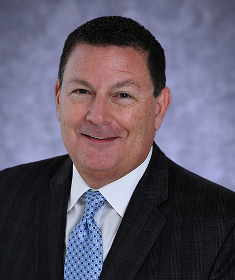Changing the differentiation game
Creating real sales differentiation your customers value and competition cannot replicate

"There is no such thing as a commodity. All goods and services are differentiable." —Theodore (Ted) Levitt, Harvard Business Review, January–February, 1980
What is it about your product, goods or services that potential customers may think of as a commodity?
That might feel like a heady question to answer, so grab a cup of coffee and think about it for a minute. How do you take your coffee? Black? With cream or sugar? Or, do you prefer a skinny latte mocha with two pumps, low foam, extra shot and a drizzle of caramel?
Ted was right! There is no such thing as a commodity—certainly not a cup of coffee. All goods and services are differentiable. Why, then, do so many sales managers say the following about their sales-force?
- "For the most part they know what the customer needs before they even talk to them."
- "My salespeople often quote product features."
- "They offer value add-ons that often drive up our costs."
What if your salespeople could expand your offering and create a highly differentiated solution that represents unexpected business value to your customer and is hard for the competition to replicate because it is unique to the customer? The very thought may hit you like a triple shot of espresso!
Let's look at a four-phase approach to broaden the realm of actionable ways salespeople can identify opportunities for differentiation and develop what Ted Levitt, in all his wisdom, coined as "the potential offering."
THE CUSTOMER LIFE CYCLE: A FOUR-PHASE APPROACH
The Customer Life Cycle represents the customer's complete experience with a solution and consists of four phases, each of which offers opportunities for finding sources of value and differentiation.
- Shop—identifying the right solution, establishing criteria and making a decision
- Buy—contracting, financing, paying for and receiving the service
- Use—implementing, installing and using the solution
- Dispose—upgrading, extending or ending use
In each of these phases, there are opportunities to solve a problem, create efficiencies, save the customer time or reduce redundancies in their systems. The value to the customer can have a significant impact without necessarily adding cost. An example of adding value might be in the Shop phase, where a seller could consult with a potential customer to help define buying criteria, working with the people responsible for identifying solution requirements. Service providers can also ensure that services are easy to understand and that customers have tools and expert help in comparing technology and matching potential solutions with their requirements.
The Buy phase offers opportunities for assisting customers with the contracting process or providing financing or leasing options. Helping with Buy issues can add value for the customer without adding to the cost of the sale or the cost of the solution. Other kinds of assistance might include accommodations on invoicing arrangements, offering pre-payment or retainer agreements and presenting timing options to match the customer's budgeting cycle.
The Use phase is where most companies offer service to the customer. The customer expects that training and installation help will be provided. To add value above and beyond this expected offering, the salesperson needs an in-depth understanding of the customer's business. With this kind of understanding, a salesperson may be able to generate creative ideas for benefits unique to the customer's business.
One sales representative observed how his company's technology was being used in his customer's warehouse operation and then made suggestions that help the customer achieve greater efficiency and accuracy in their picking and packing processes.
While often overlooked, there are also many opportunities to provide new value in the Dispose phase. This could involve helping the customer measure results at the end of a contract, report on value achieved or otherwise determine ROI. Salespeople may also conduct a new needs analysis to help customers determine whether there are additional needs for expanded services or updated technology.
Another great opportunity to differentiate at the Dispose phase is for salespeople to look for ways to help companies "go green" by providing options for recycling or reusing part or all of the product/equipment.
LEVELS OF A DIFFERENTIATION STRATEGY: ORGANISATION DIFFERENTIATION, SALESPERSON DIFFERENTIATION
There are two levels of responsibility at play in a differentiation strategy. At one level is organisation, marketing differentiation, which analyses the market segment and is largely responsible for the product's or service's tangible features, benefits and value proposition. At this level, awareness and interest are generated on a "one-to-many" scale.
Salesperson differentiation takes place by the salesperson or sales team at the one-to-customer scale and adds value by changing the intangible aspects of the offering, such as service, delivery schedules, billing arrangements, training, etc. Differentiation at this level involves creating a unique offering to meet specific needs—stated or unstated—of a particular customer to build desire and make a call to action.
To successfully execute the "Salesperson Differentiation" strategy, sales management needs to hold salespeople accountable to describe the full range of customer experience using the Shop-Buy-Use-Dispose approach as a framework for (1) understanding their customers' business, needs, priorities and interests and (2) creating a unique offering that represents unexpected business value to their customers.
CHARACTERISTICS OF A SUCCESSFUL DIFFERENTIATION STRATEGY
Three key characteristics of a successful, sustainable differentiation strategy are:
- Uniqueness for the customer
- Value for the customer
- Profitable for the seller
A differentiation strategy must lead to a profit to the selling organisation. While that may seem wildly simple, far too often a differentiation strategy reverts to "value-add" by offering the customer extra services or product features without charge. While this strategy can be effective in the short term, it does not produce a sustainable advantage. While it may sometimes win a sale, it produces customer expectations of "free stuff"; it also erodes margins and may be easy for competitors to match. Finally, while it may feel necessary in a competitive market, this tactic might be seen as unnecessarily complex by a customer who never asked for, nor needs, these "value-adds."
ENSURING PROFITABLE DIFFERENTIATED SOLUTIONS
Consider the following questions in light of three key characteristics of a successful, sustainable, differentiation strategy—one that is Unique, Valuable and Profitable for the seller:
- Is this offering aligned with your company goals and strategic direction?
- Will this offering impact operations? What changes to intake, manufacturing, distribution and/or customer support may need to happen?
- How does this offering impact cost, margins and/or profitability?
- Who within the company will be affected by this offering? Who else needs to be involved with implementation?
- Who needs to approve this offering? Is this worth it?
- What are other options, if this offering is not feasible?
READY FOR A REFILL ON YOUR COFFEE?
Expanding your offering to a differentiated, unique solution comes from an innovative sales-force looking in the right places across the full range of the customer's experience with your company, products and services.
There is no such thing as a commodity. Everything is differentiable.
To learn more, contact Wilson Learning Worldwide | Phone: +44.1494.678.121 | Email: info@wilsonlearning.co.uk








 Please complete this form to download Changing the differentiation game | Creating real sales differentiation your customers value and competition cannot replicate.
Please complete this form to download Changing the differentiation game | Creating real sales differentiation your customers value and competition cannot replicate.



